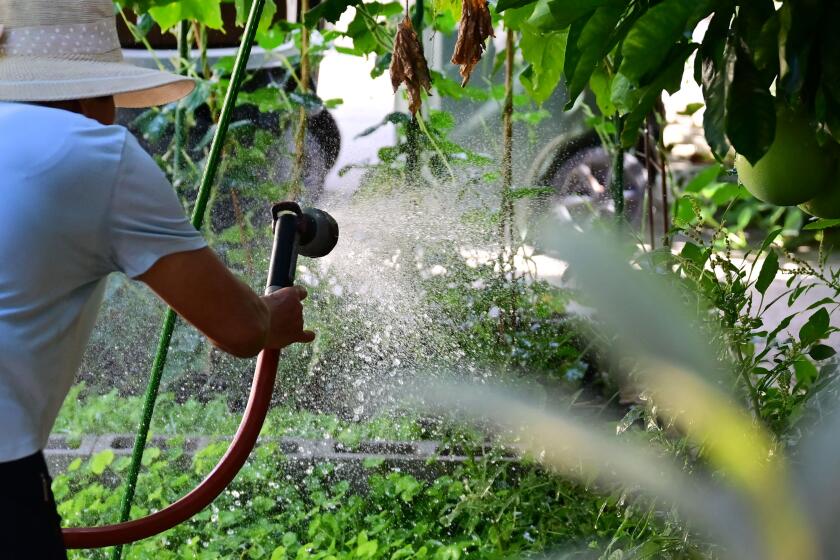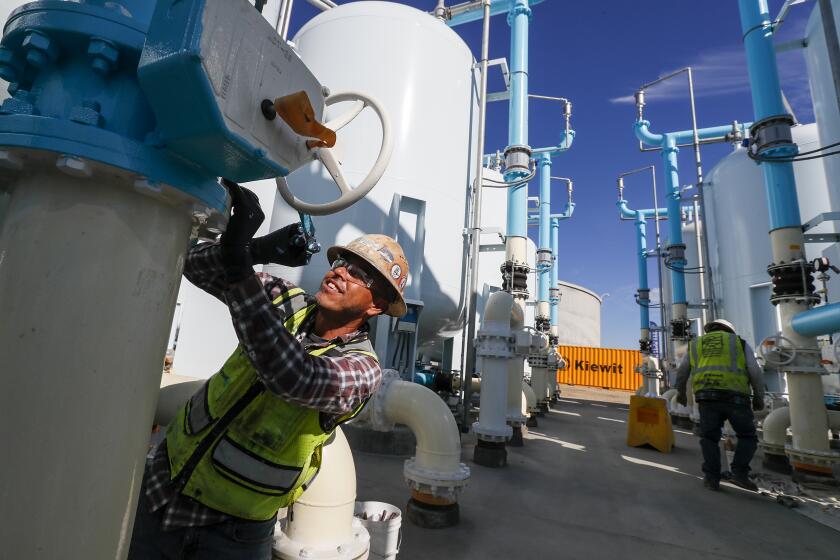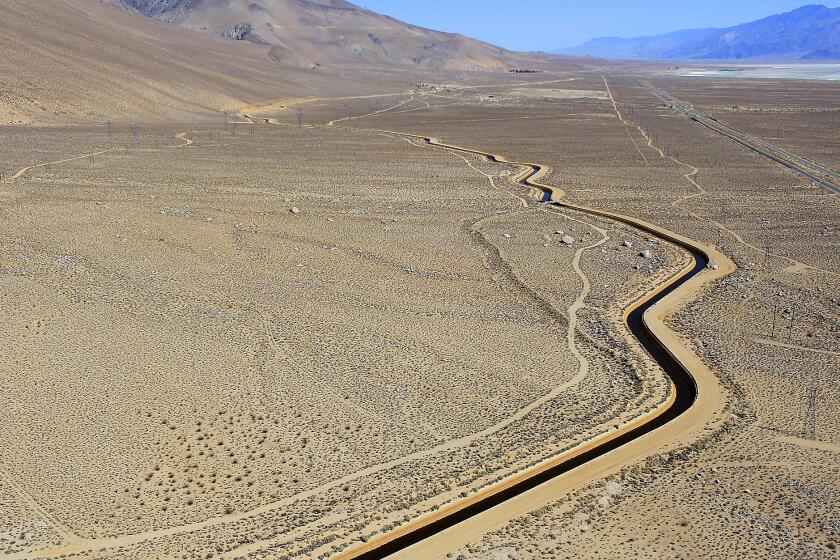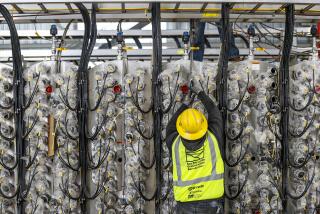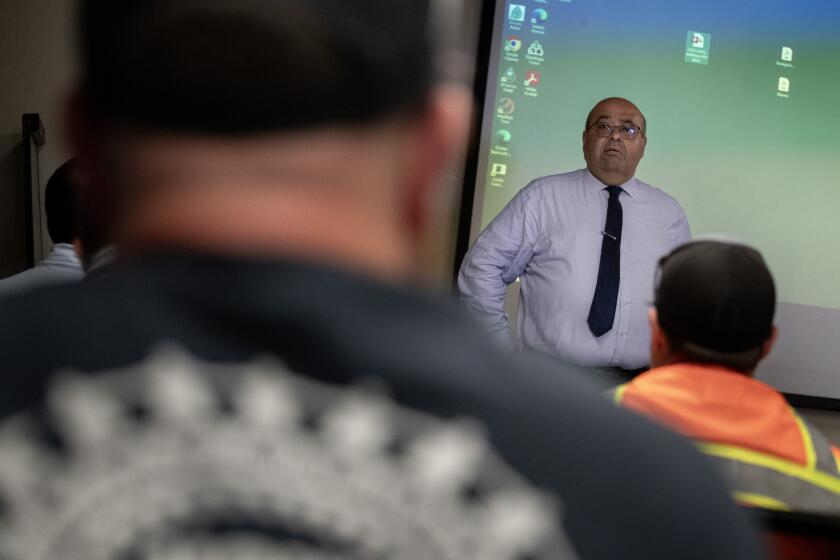Low on water, but high on celebrity, Las Virgenes seeks wastewater purification facility
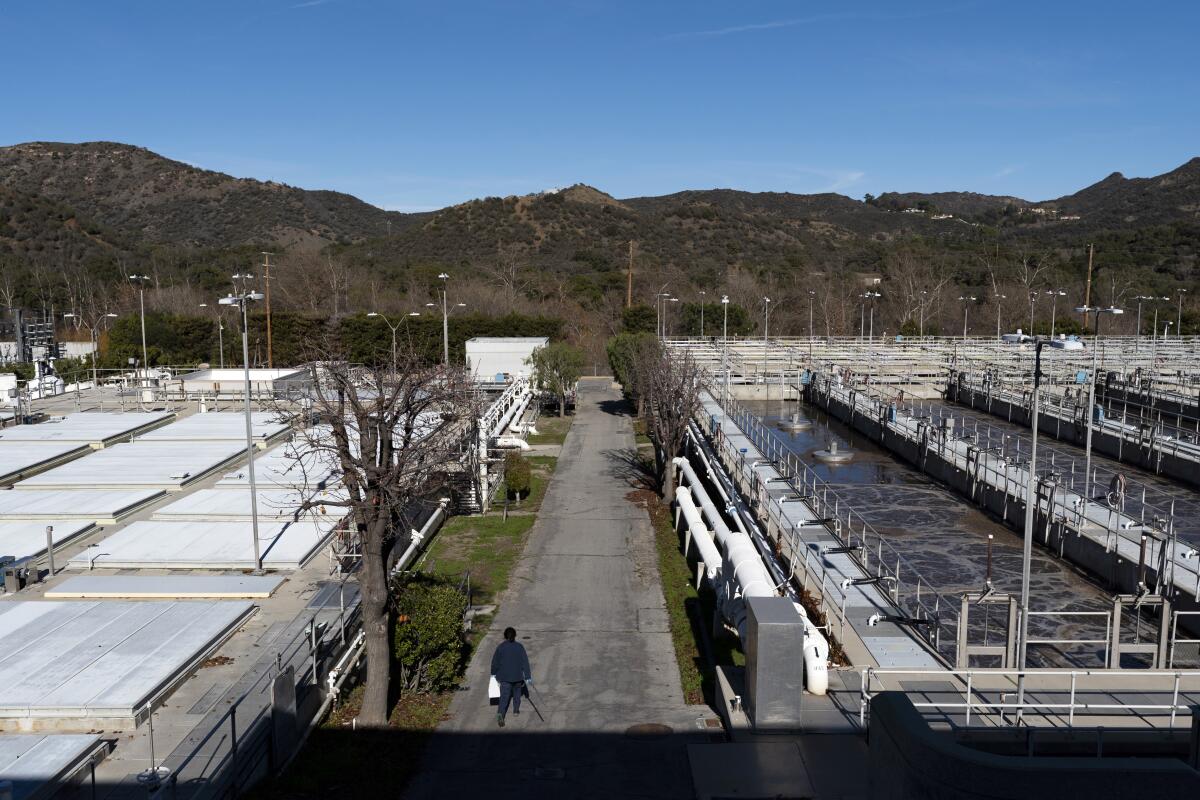
A celebrity-studded, water-strapped region on the western edge of Los Angeles County has cleared a major hurdle for the construction of a water purification facility that officials say will help reduce local dependence on supplies imported from Northern California.
The board of the Las Virgenes-Triunfo Joint Powers Authority this week approved a final impact report for the proposed Pure Water Project at 30800 Agoura Road in Agoura Hills — a facility that would purify the millions of gallons of treated wastewater that are used for irrigation or flushed into the Pacific Ocean.
The facility would supply water to about 75,000 residents in Agoura Hills, Calabasas, Hidden Hills and Westlake Village, and about 14,000 residents in Ventura’s Oak Park. The communities have long relied almost entirely on state supplies.
“It’s obvious that we need to prepare for a future where we are less dependent on those distant water sources,” said David Pedersen, general manager of the Las Virgenes Municipal Water District. “We will always need them, they will be part of our portfolio, but we need to be more self-reliant.”
The Metropolitan Water District of Southern California is calling on water agencies in the region to immediately reduce their use of all imported supplies.
Both Las Virgenes and the Triunfo Water and Sanitation District have been hit hard by lingering drought, and getting ratepayers to cut back on water use has sometimes been difficult. In August, Las Virgenes issued notices of exceedance to more than 2,000 customers, including Sylvester Stallone, Dwyane Wade, Kevin Hart and Kim Kardashian.
Almost all of the area’s water comes from the Metropolitan Water District of Southern California via the State Water Project — a network of reservoirs, canals and pipelines that feeds dozens of agencies across the state. But as heat and drought sap those supplies, state officials have been forced to slash their allocations, leaving areas such as Las Virgenes with little recourse.
Earlier this year, the agency projected a potential shortage of 63% if drought conditions do not improve in 2023, with spokesman Mike McNutt noting recently that the number has probably gotten worse since then. On Wednesday, the MWD announced a drought emergency for all of the Southern California region.
The new facility, known as the Pure Water Project Las Virgenes-Triunfo, will have the capacity to treat up to 6 million gallons per day, enabling up to 20% of the area’s water needs to be sourced locally, officials said.
“This has been an important process and we are so excited to get to this significant moment,” Jay Lewitt, chair of the Joint Powers Authority, said in a statement. “Our most critical and significant job is to ensure our customers have a reliable water supply. This project will do just that.”
The Pure Water Project will take treated, recycled wastewater from the Tapia Water Reclamation Facility in Agoura Hills and send it to the new facility, where it will undergo a multi-step purification process that includes membrane filtration, reverse osmosis and ultraviolet light disinfection with advanced oxidation, officials said. The Tapia facility, which is owned and operated by the Joint Powers Authority, discharges treated wastewater into Malibu Creek, which then flows into Malibu Lagoon and the Pacific Ocean.
The process will remove bacteria, viruses, pharmaceuticals, “forever chemicals” and other compounds of concern from the water to create “the cleanest drinking water available,” officials said.
From there, the purified water will be blended with water from the State Water Project in the Las Virgenes Reservoir for six months before being treated a third time at an existing filtration plant and then distributed throughout the service area.
The city is nearing the completion of a $600-million project that will revitalize a long-contaminated water source and Superfund site.
Not everyone was fully on board with the concept. A handful of public commenters in recent meetings expressed concerns about drinking recycled water and about potential environmental impacts of the project on oak trees and Malibu Creek.
The environmental impact report “contains numerous errors and deficiencies and fails to serve as the informational document needed to inform decision makers and the public of the potential environmental consequences before the project is approved,” Andrew Graf with the County Line Alliance for Sustainable Projects told the board.
Among his concerns were potential overuse of the area’s groundwater basin and possible air quality and health effects associated with the construction project. He also said the report “fails to accurately describe the environmental setting, including the existence of sensitive plants and wildlife in the project area.”
Board members said the project will almost completely eliminate discharges into Malibu Creek, save for those required to maintain stream flow, and will meet the Environmental Protection Agency’s strict regulatory requirements for total maximum daily loads for contaminants.
“We know that we need to comply with more stringent environmental regulations in Malibu Creek. That’s an order by the EPA that’s hard and fast,” board member Charles Caspary said during the meeting.
By maintaining instream flow of 2.5 cubic feet per second in the summer, the project will provide better water quality to Malibu Creek and help support fish habitat, officials said. Additionally, minimizing discharges from the Tapia facility between April and November will help reduce harmful nutrient loading and the transport of sediments downstream.
“The Pure Water Project is a win-win because it will both augment local water supply and help LVMWD comply with its water quality permit requirements to reduce excessive nutrients in the Malibu Creek watershed,” Norma Camacho, chair of the Los Angeles Regional Water Quality Control Board, said in a statement.
Agoura Hills Councilmember Penny Sylvester said the city was very excited about the project and grateful to the board for finding “new ways to reclaim and use water,” but also asked about the fate of oak trees in the project construction site.
Pedersen said about 36 oak trees will have to be removed or transplanted, and that any removed trees will be replaced at a 4-to-1 ratio.
With another dry year ahead, state water officials are stressing that water conservation efforts must continue in 2023.
McNutt said the project had received broad community support, especially as residents in the district face the likely prospect of tighter water restrictions and a potential full outdoor watering ban next year.
“We as a water agency have to take care of ourselves, because if we can do that then we’re going to be less reliant on worrying about where other water is coming from,” he said. “This is a solution to keep it local.”
The board’s approval means officials can begin fundraising and securing a design firm, Pedersen said. He anticipated that funding for the $364-million project will come from a combination of federal and state grants and low-interest loans, meaning ratepayers will share in some of the costs.
However, he said projections show there will be a “crossover point” in about 15 years where the district will be producing water at a lower cost than importing it.
“This action could not have come at a better time,” he said. “We are among the most severely impacted by drought in all of Southern California, and our customers are feeling the impact. This is our job. We need to do this, and we’re making it happen.”
More to Read
Sign up for Essential California
The most important California stories and recommendations in your inbox every morning.
You may occasionally receive promotional content from the Los Angeles Times.
